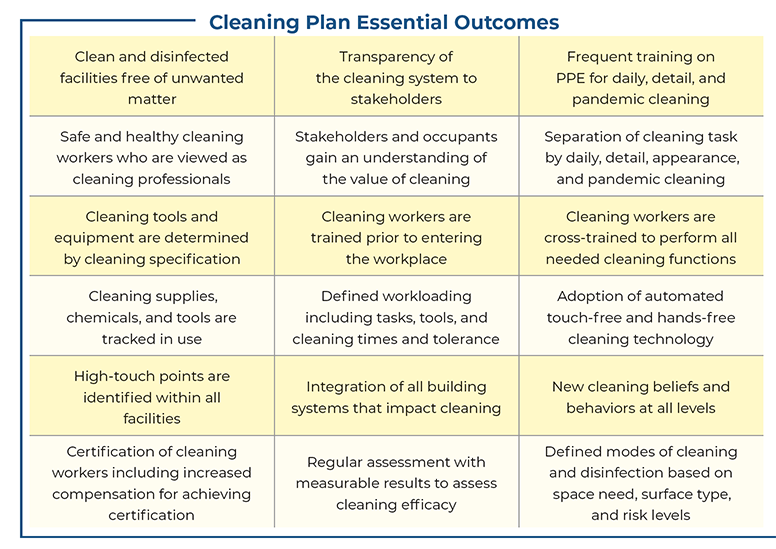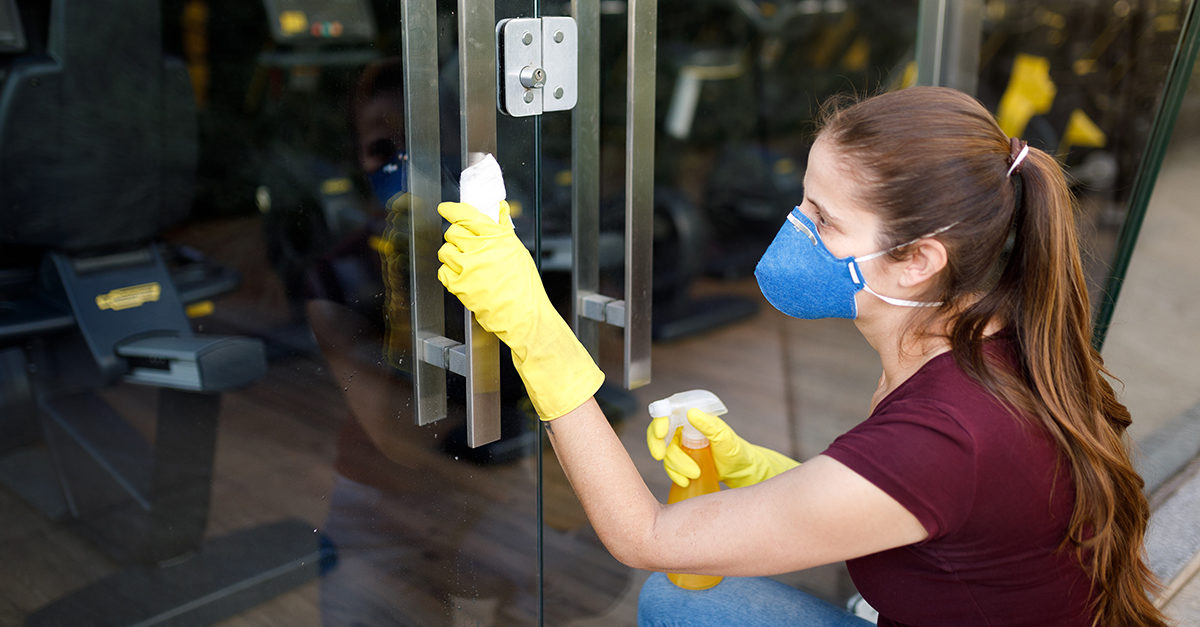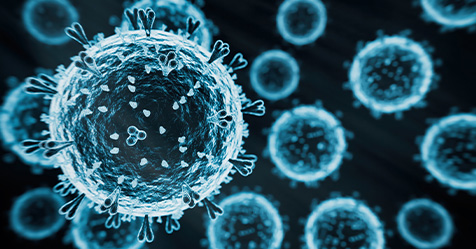In the post-pandemic world, cleaning is going to be different. Whether you need to increase cleaning and disinfection levels or decrease your cleaning budget spending after your pandemic response, one thing is clear—there is going to be change. The ability to quickly develop and implement proven strategies to meet this change is critical to your organization’s success. As this new reality unfolds, organizations need to have a robust return-to-work cleaning plan that clearly outlines what a return to business entails. Here are elements to include in your plan to achieve desired outcomes during the recovery phase.
Initial assessment
The arrival of the global pandemic has demanded cleaning organizations dive deep into operations, expectations, and outcomes. New outcomes may be complicated to understand as organizations search to find answers and definition from numerous sources.
The first step is defining your organization’s current status to gain insight about the strengths, stability, and weaknesses of your entire operation, as well as opportunities resulting from today’s new requirements. It is easy to lose sight of the big picture when meeting the numerous daily pandemic requirements has become a habit. Without the correct dataset, you could miss systemic problems that affect cleaning efficacy, creating negative outcomes in your organization.
Workloading and transparency
In the new reality, be sure your cleaning plan matches the correct number of people and appropriate types of resources to the necessary tasks and functions. Some cleaning organizations will need to significantly increase cleaning frequencies to continuously combat coronavirus risk. Your new cleaning plan must be workloaded to clean and disinfect the built environment while being transparent to users more than ever before.
Cleaning transparency helps reduce return-to-work fear and anxiety and allows the end user to have confidence the cleaning process is in place and working as designed. It involves open and honest communication with your customers about all the components included in your cleaning plan and how these components impact them.
Worker training
Empower your workers with classroom and hands-on training specific to the tools, equipment, chemicals, and personal protective equipment (PPE) they will use. Ensure the training also includes your organization’s pandemic response plan. Training helps staff understand why their work is critical to the health and welfare of building occupants and guests that utilize the space they clean.
Support systems
Put support teams in place that not only understand the parts of your operations that need to be changed, but also the reasons behind the changes. Properly setting up your new cleaning plan with this support is critical to long-term, sustainable results. The support and guidance of individuals who know what can and cannot be changed will generate the desired outcomes in your operation. Make sure to implement tracking systems that measure key metrics so operations can provide evidence of new cleaning plan outcomes.
Effective leadership
As a leader, you will need to be proactive and have the flexibility to adapt your decision processes to daily information changes. Dynamic thinking can prevent you from leading your organization down chaotic and disruptive paths in reaction to the fear and panic of others. Create leadership reserves to prevent burnout at the top of your organization.
Culture change
Even if you don’t plan for the new culture in your cleaning plan, a new culture is forming. If you don’t have a plan, you may not like the outcome. Culture is driven by beliefs, values, attitudes, and behaviors. Your new plan needs to include a narrative and actions to navigate the culture change.
Quality assessment
Ongoing assessment is the key to knowing where your organization stands. Cleaning plan assessment components include:
Process: Identify, document, and measure all processes workers are following to clean and disinfect. If you don’t have a documented process, it’s difficult to achieve repeatable results and it’s extremely hard to get consistent results.
Logistics: Assess the cleaning logistics to identify best practices for setting up and deploying the cleaning plan. Cleaning logistics include all physical inventory and tools needed for the cleaning plan to work. Install established stocking levels to prepare for potential supply chain disruption.
Appearance: An area’s appearance is a direct outcome of cleaning. Measure appearance on a scale that allows you to set a value on how something looks. Cleaning appearance can be measured in many formats including yes/no, 1 to 5, and others.
Tolerance: All cleaning tools are not created equally. Understanding the cleaning tolerance of the tools and equipment is essential to achieve cleaning plan outcomes.
Effectiveness: When something is deemed effective, it has an intended or expected outcome. Effectiveness measures whether you are getting the desired outcome not only in appearance, but also in germ control, as pathogens you cannot see can cause harm. Cleaning plan effectiveness can be measured using testing equipment such as ATP meters, particulate counters, moisture-detecting devices, and tribometers.
To determine if your return-to-work cleaning plan is ready to implement, consider the outcomes you want the plan to generate. The Cleaning Plan Essential Outcomes chart below will guide you.
As our country shifts toward reopening, the cleaning community must focus on how its plans affect the safety and health of clients. Traditional cleaning plans, whether executed internally or with outside resources, must evolve to new standards set as a result of the pandemic. Be prepared for change and flexibility when executing your new cleaning plan.





